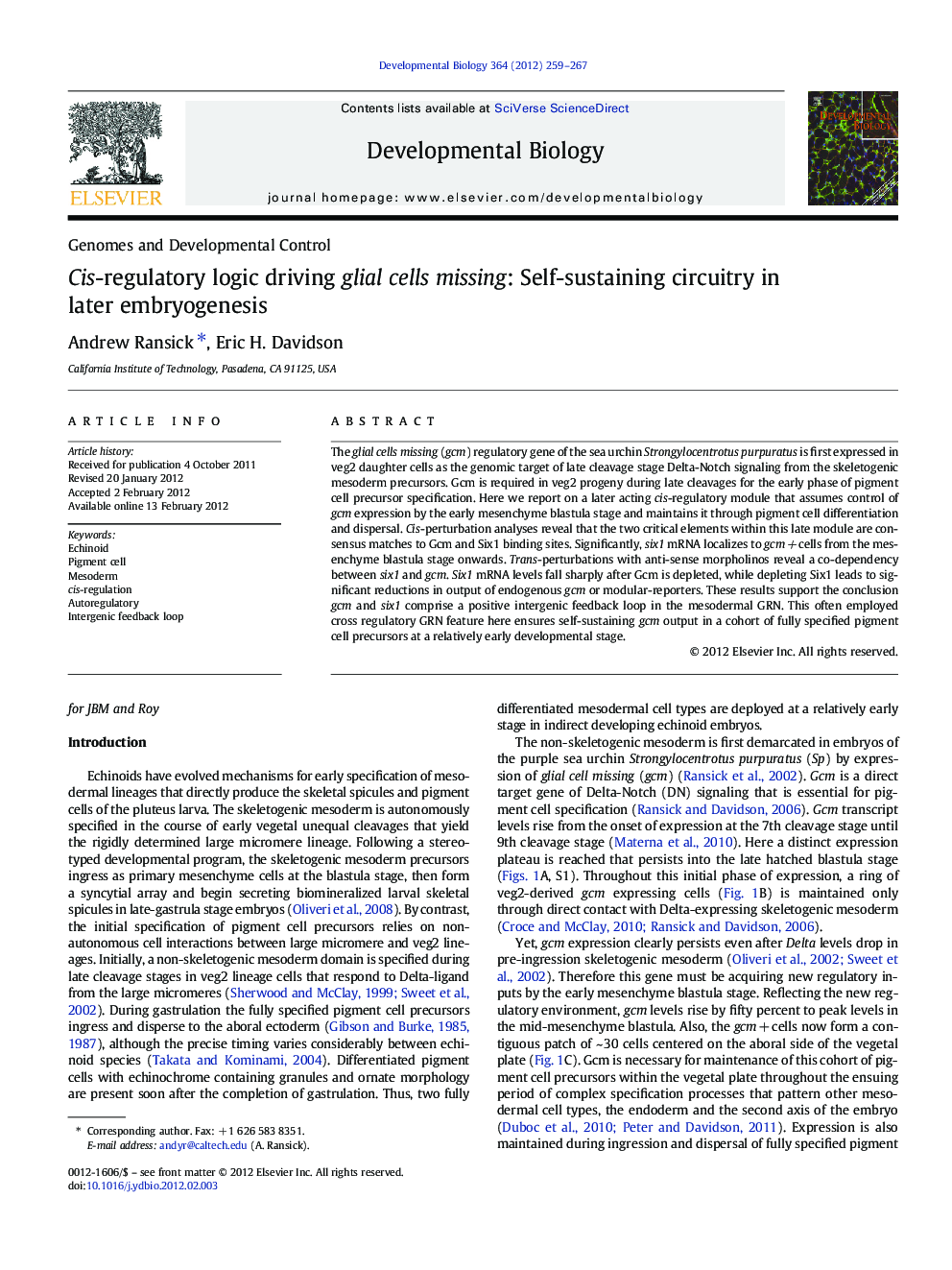| Article ID | Journal | Published Year | Pages | File Type |
|---|---|---|---|---|
| 2173325 | Developmental Biology | 2012 | 9 Pages |
The glial cells missing (gcm) regulatory gene of the sea urchin Strongylocentrotus purpuratus is first expressed in veg2 daughter cells as the genomic target of late cleavage stage Delta-Notch signaling from the skeletogenic mesoderm precursors. Gcm is required in veg2 progeny during late cleavages for the early phase of pigment cell precursor specification. Here we report on a later acting cis-regulatory module that assumes control of gcm expression by the early mesenchyme blastula stage and maintains it through pigment cell differentiation and dispersal. Cis-perturbation analyses reveal that the two critical elements within this late module are consensus matches to Gcm and Six1 binding sites. Significantly, six1 mRNA localizes to gcm + cells from the mesenchyme blastula stage onwards. Trans-perturbations with anti-sense morpholinos reveal a co-dependency between six1 and gcm. Six1 mRNA levels fall sharply after Gcm is depleted, while depleting Six1 leads to significant reductions in output of endogenous gcm or modular-reporters. These results support the conclusion gcm and six1 comprise a positive intergenic feedback loop in the mesodermal GRN. This often employed cross regulatory GRN feature here ensures self-sustaining gcm output in a cohort of fully specified pigment cell precursors at a relatively early developmental stage.
► New cis-regulatory control mechanisms of glial cells missing in sea urchin embryos. ► Late acting cis-regulatory module of gcm becomes active in mesenchyme blastulae. ► Late module encoding drives gcm in a stabilizing intergenic loop with six1. ► Sustained gcm output locks down pigment cell fate. ► Late module continues to drive gcm in differentiated pigment cells.
